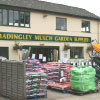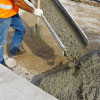Top Tips for Creating the Ideal Driveway
Driveways are an essential part of any modern home; they add value to it, as well as offer convenience and security to car owners. Here, Madingley Mulch, who supply driveway stones (and a host of other essentials) from our base near Cambridge have provided some top tips to ensure that the whole process is trouble-free.
Check with Local Planners
Depending on what type of driveway you are creating, you may need planning permission. This depends on access (that is, if it links directly onto a public highway), what materials you are using, and how big it is.
If it’s impermeable (rain doesn’t soak through) then you may also need to factor in the cost of a planning application. The idea behind this is to cut down the risk of flooding in an area. Impermeable materials include concrete, asphalt, and porcelain paving slabs.
However, if you are using permeable materials including gravel or other decorative aggregates, or some natural stones such as Indian sandstone, you may not need permission as the water should soak away naturally.
Talk to us or your local council about it as you don’t want to get into trouble if you don’t follow the rules.
Mark the Area Out
Wooden stakes and a string line will help when it comes to measuring out the area, or you could use a white spray if you are digging up some grass. When doing so, make sure you leave enough room for all the vehicles which are likely to use it (including passing spaces if required). If the driveway needs to be big enough to accommodate several vehicles, you might need professional help as there will be a lot of physical work involved.
Dig Out the Area
A spade or shovel to dig out the topsoil should be enough if the drive is for a single vehicle. However, an excavator may be necessary if it’s anything larger. You probably need to go down to 250mm deep if it’s going to be a solid driveway, or 200mm deep if you are going to lay decorative stones on top.
Either way, you will need enough depth to lay a sub-base, which is going to take the weight of your vehicle or vehicles.
Install Your Sub-Base
Type 1 stones are the best for this because of their load-bearing qualities. It will also be a good idea to break it all up and compact it with a plate compacter or whacker plate – it’s probably worth hiring this rather than buying one outright. In this case, make sure you invest in PPE – goggles, hardwearing gloves, ear protectors – while you use it.
Protect it Against Weeds
If your driveway is porous, it can easily be damaged by weeds growing through (apart from any structural problems, it looks unsightly). Therefore, consider laying down a weed-suppressing membrane which will stop weeds from growing up, but will still allow rain and moisture to trickle through.
Add Your Top Layer
Gravel or decorative stones (such as our 10mm gravel, above) are much easier to lay. This is because you can just pour them onto the top and rake them out to make them even. It’s also a good idea to give them a rinse with a garden hose to stabilise them and get rid of any dust and debris.
If it’s a concrete pour, you will have to make sure it’s evenly spread over the whole area as well as laying out wooden forms so the concrete doesn’t spill over into other parts of the garden. You will also have to wait for the concrete to set and be ‘cured’ to ensure it reaches maximum strength before you put any vehicles on it – this could take a couple of weeks.
If your driveway consists of paving slabs, it’s a good idea to wet their undersides before starting. Tap them into place with a rubber mallet to avoid cracking the slabs; and use a spirit level regularly to ensure the whole surface is even. The slabs should also be sealed – either with sand or a manufacturer’s special sealant or compound.
Don’t Forget to Edge It
Every driveway looks much neater and tidier if it is clearly defined – particularly if it’s with loose gravel or decorative stones, as you don’t want any gravel spilling out.
So consider laying down some decorative or formal edging which will keep the stones in place. This is because some smaller stones can easily be picked up by the soles of your footwear and end up where they aren’t wanted, such as on the lawn or in your home.
Driveway Stones in Cambridge from Madingley Mulch
At Madingley Mulch, we have all the ingredients you need for your driveway. These include:
- MOT Type 1 stones for your sub-base
- a range of paving slabs – some of which will be suitable for use as driveways (check with us if you aren’t sure)
- and if you’d rather your drive contained gravel or decorative stones, then check out our selection here – again, we can tell you which ones will best meet your needs.
We also stock driveway membranes at our base near Cambridge – these will help those unwanted plants from spoiling the look of your new drive, as well as decorative edging which can be used as a border for driveways as well as flower beds.
Lastly, if you want to make your driveway more sustainable, check out our previous blog post here. And, if you have any questions, you can always call us on 01954 212144.
Back to blog




